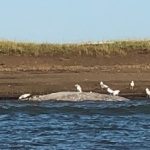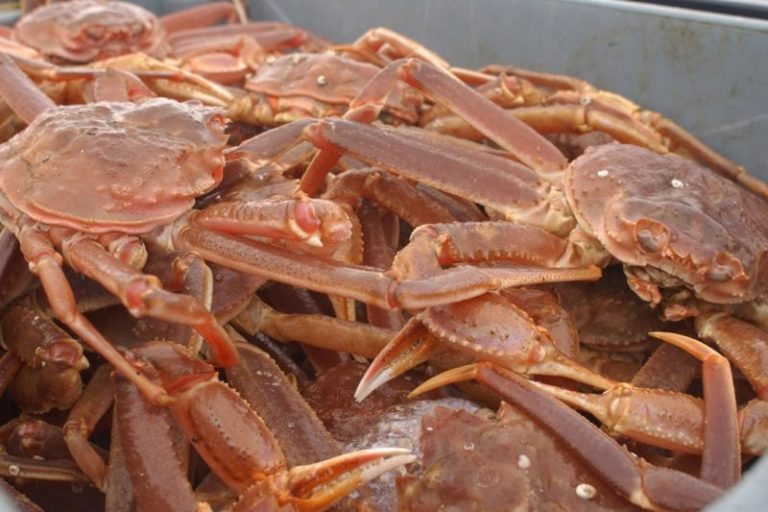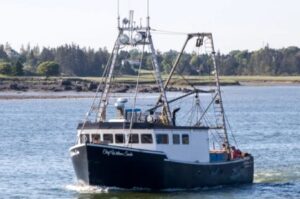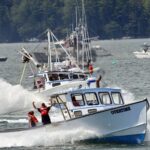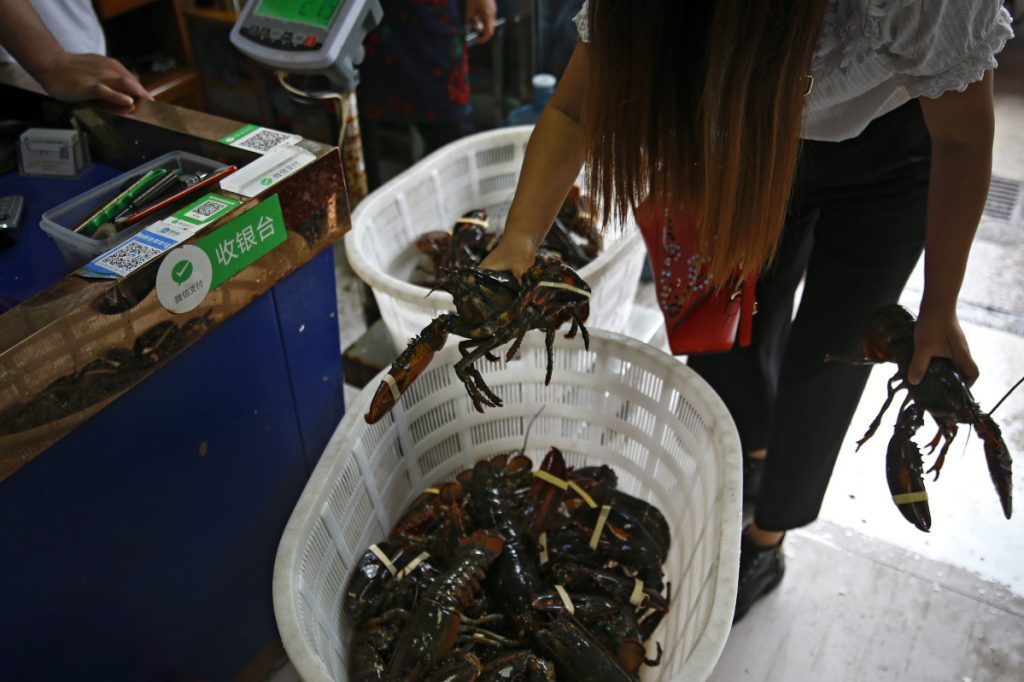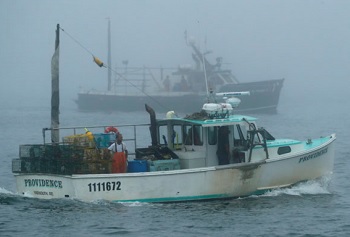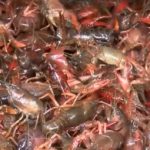More than a pin
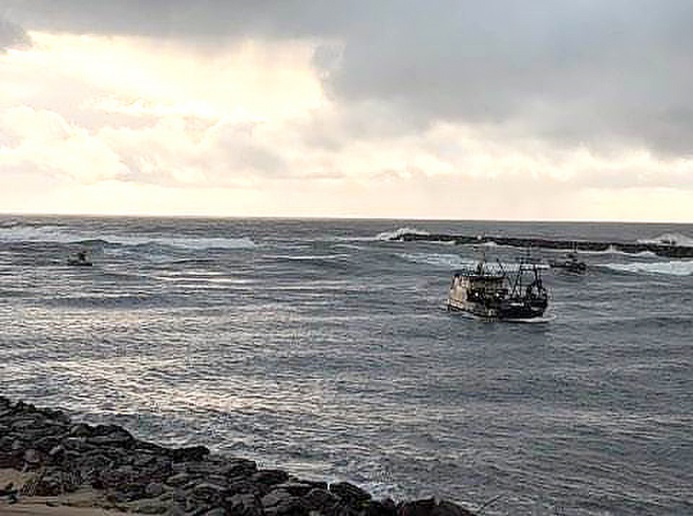
Petty Officers 2nd Class Enrique Lemos and Aaron Hadden and their crews aboard 47-foot Motor Lifeboats from Coast Guard Station Umpqua River escort the fishing vessel Brenna A across the Umpqua River bar located near Reedsport, Oregon, April 1, 2020. Lemos and Hadden were both recently qualified as surfman, which is the highest qualification for small-boat operators. (U.S. Coast Guard photo courtesy of Station Umpqua River)
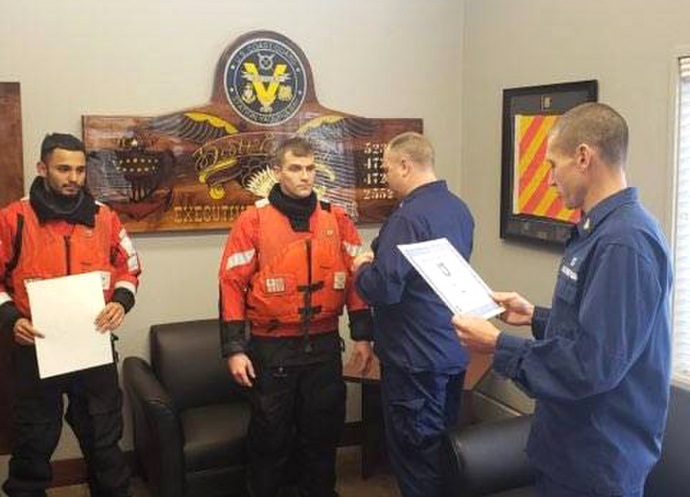
Petty Officers 2nd Class Enrique Lemos and Aaron Hadden receive their surfman pins during a small ceremony at Coast Guard Station Umpqua River located in Reedsport, Oregon, April 1, 2020. Lemos and Hadden had just completed an escort of a 107-fooot 198 gross ton fishing vessel across the Umpqua River bar, which was experiencing 14-foot breaks during the series. (U.S. Coast Guard photo courtesy of Station Umpqua River)

Petty Officers 2nd Class Enrique Lemos and Aaron Hadden receive their surfman pins during a small ceremony at Coast Guard Station Umpqua River located in Reedsport, Oregon, April 1, 2020. Lemos and Hadden had just completed an escort of a 107-foot 198 gross ton fishing vessel across the Umpqua River bar, which was experiencing 14-foot breaks during the series. (U.S. Coast Guard photo courtesy of Station Umpqua River)
By Petty Officer 1st Class Levi Read
The call for assistance from the fishing vessel Brenna A had already come in, and the Coast Guard Station Umpqua River crews were preparing to swap duty sections. The oncoming duty section was led by the Coast Guard’s newest Surfmen, Petty Officers 2nd Class Enrique Lemos (#559) and Aaron Hadden (#560). The two of them discussed the escort request upon reporting for duty at 7 a.m.
They knew from the morning bar report that the Umpqua River bar was breaking at 14-feet on the series and also had 10 to 12-foot steep swells. The vessel, a 107-foot 198 gross ton fishing vessel, en route to Alaska had never crossed the Umpqua River bar before. They also knew that they were supposed to stand in front of their shipmates at 8 a.m. and be pinned with the distinctive surfman pin, a silver-colored life ring on top of two crossed oars.
“Honestly, the pinning ceremony didn’t even come up,” said Lemos. “It was a routine decision we made together. It was a normal decision process that we make throughout the winter season. We needed to get underway and ensure the crew of the Brenna A came across the bar safely.”
The pinning ceremony is a time-honored military tradition that signifies the promotion, advancement or qualification to all those in attendance. This particular pinning ceremony only happens a handful of times a year. To those receiving the surfman qualification it is usually four to six years in the making.
The long, arduous journey to surfman usually starts when the basic coxswain qualification is earned. The qualification process is painstaking and time consuming. It includes hours upon hours of underway training and countless rescue missions. The pin and uniform patch signifies the highest qualification that a Coast Guardsman can attain in the small-boat community.
The ceremony would have to wait for the two Station Umpqua River surfmen to return because lives were on the line. A surfman has to be on duty and aboard any Coast Guard 47-foot Motor Lifeboat whenever conditions on the bar extend past 8-foot breaking waves. There also has to be two boats underway.
Lemos and myself had trained together for the past two-and-half years,” said Hadden. “We are the only two qualified coxswains in our duty section, and we are good friends. Throughout the qualification process we divided up our time as evenly and fairly as possible. It was always friendly competition, always being there and always pursuing sign-offs and asking to go out and train.”
The qualifications had already been earned for surfmen 559 and 560 after successful check rides about a month ago. At the time, neither Lemos or Hadden knew they were on checkrides.
“It was a two-day evolution of inbounds, outbounds, lateraling in and out of the surf,” said Lemos. “Day two we conducted man overboard drills in the surf and ran through multiple other drills. We were just out there training and getting operating hours under our belts.”
A few days later Senior Chief Petty Officer Scott Slade, the officer-in-charge at Station Umpqua River, called Lemos and Hadden into his office and read aloud their newly assigned surfman numbers and told them they were qualified surfman and could go out on the planned training alone.
Most surfman pinning ceremonies are not strictly traditional. They also signal more than a qualification. It is an entrance into a tradition-laden community with current and retired surfmen often in attendance to see the pin placed on a person’s chest.
“I came into the Coast Guard wanting to be a surfman because of the challenge and the possible adrenaline rush,” said Hadden. “I was prior service with four years in the Army as a combat engineer including a year in Afghanistan.”
After leaving the Army, he went into the recruiting office to rejoin the Army but met a Coast Guard recruiter instead who was a boatswain’s mate. He then researched the Coast Guard and found a bunch of surf videos and knew that was what he wanted to do.
“I didn’t know I wanted to be surfman going into the Coast Guard, but my company commander at Coast Guard Training Center Cape May was a surfman boatswain’s mate, who turned me onto the career path,” said Lemos.
Even though they already had knowledge of the surfman qualification, the ceremony was not anti-climatic.
“I enjoyed the smaller in-house version of events and really felt like I achieved something and had the characteristics of surfmanship,” said Hadden. “I knew I had the experience and felt I had the expertise for people to come to me if they needed something especially in the Station Umpqua River area of responsibility.”
“It was still a cool experience because of the circumstances,” said Lemos. “ It just felt right to receive my pin and certificate while standing in my drysuit.”
The qualification is symbolized by a pin and a patch, but it is the decisions and leadership displayed by both Lemos and Hadden that give proof to who and what a surfman is. When the call came in they both made the call to go out. It was an easy decision for them on April 1, 2020, and it is sure to be an easy decision next time as well, because they are surfmen.
-USCG-
U.S. Coast Guard 13th District PA Detachment Astoria
Contact: Coast Guard PA Detachment Astoria
Office: (503) 861-6380
After Hours: (206) 819-9154

































